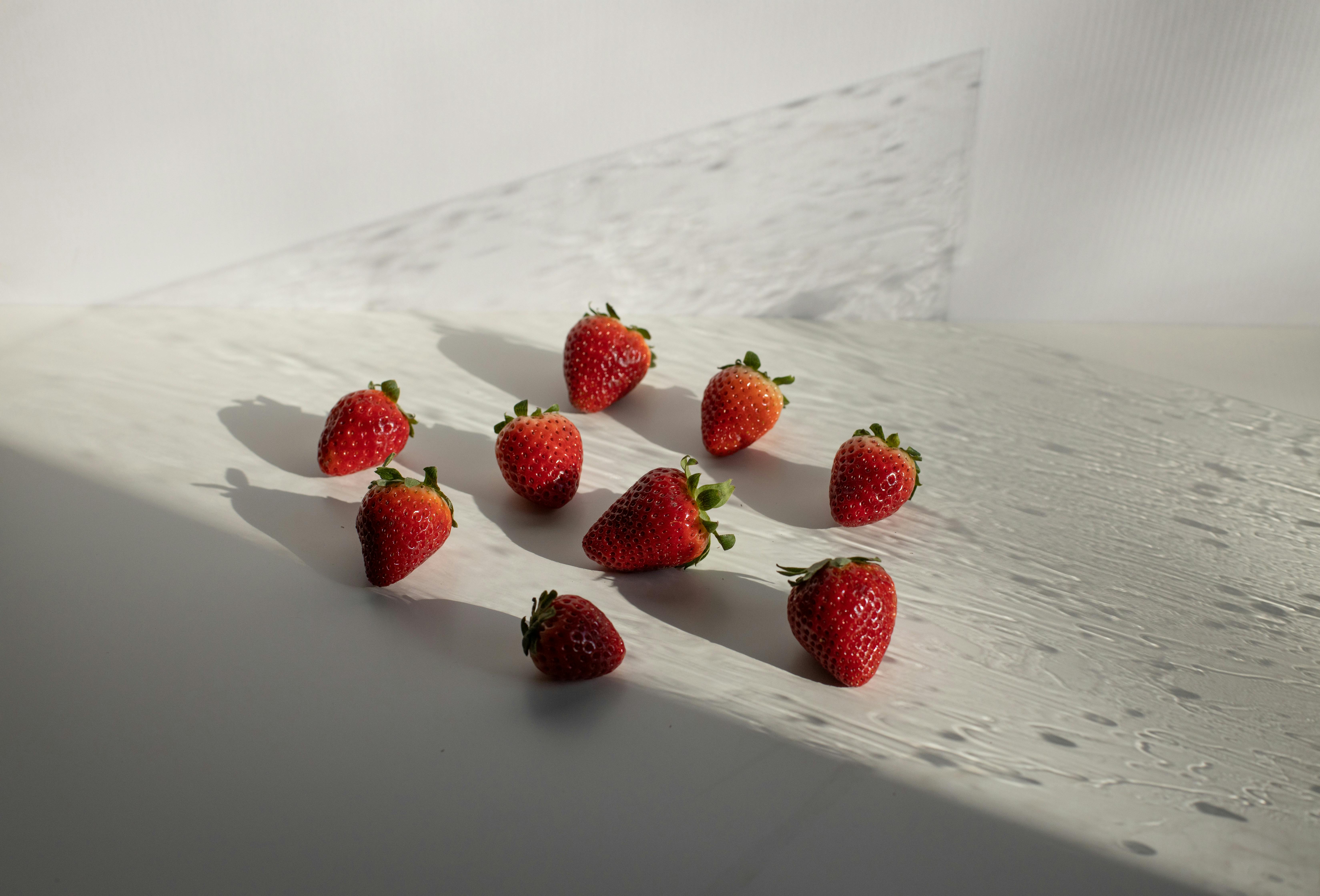Strawberries are one of the most popular fruits in the world, and with good reason. Not only are they delicious, but they’re also packed with vitamins and antioxidants. Whether you’re a beginner or an experienced gardener, this guide will help you learn how to plant strawberry bare root successfully. You’ll learn about the necessary supplies, the best soil for strawberries, and how to properly care for your strawberry plants. With this guide, you can have your own strawberry patch in no time!A Strawberry Bare Root is a type of strawberry plant that is sold without soil or dirt surrounding its roots. It is typically sold in a dormant state and must be planted in soil or a potting mix before it can begin to grow.
How to Select the Right Strawberry Bare Root
Choosing the right strawberry bare root is an important decision for any gardener. The selection process can be a little daunting, but with a few simple steps, you can ensure you select the best plants for your garden.
The first step is to determine what type of strawberry you would like to grow. There are several varieties available, including June-bearing, day-neutral, and everbearing varieties. Each variety has its own unique characteristics and benefits. Once you’ve chosen a variety, it’s important to read up on that particular variety and understand its specific needs for optimal growth.
The next step is to select healthy strawberry plants with good quality root systems. Look for uniformity in size and shape of the roots. The roots should be white or pale yellow in color without any signs of browning or deterioration. Also check for any signs of disease or pests that could affect the health of the plant.
Finally, it’s important to make sure you select plants that are well-suited for your local climate conditions. Different varieties have different requirements when it comes to soil type, moisture levels, temperature fluctuations, and sunlight exposure. Taking all these factors into consideration will help ensure your plants thrive in their new home.
By following these simple steps when selecting strawberry bare root plants, you can ensure that your garden will be filled with healthy and productive plants for many years to come!
Preparing the Soil for Planting Strawberry Bare Root
Strawberry bare root planting is a great way to get started with growing strawberries in your garden. When preparing the soil for planting, there are a few steps that should be taken to ensure that the plants will grow and thrive. The first step is to test the soil pH. This can easily be done using a soil test kit which can be purchased at most garden centers or online. It is important to make sure that the pH of the soil is between 6.0 and 7.0 as strawberries prefer slightly acidic soils. If necessary, adjust the pH of the soil with lime or sulfur, following package instructions.
The next step is to make sure that the soil is well-draining and not too waterlogged or soggy, as this can lead to root rot in strawberry plants. If necessary, add sand or other amendments such as organic matter to improve drainage. Make sure that any amendments are mixed into the top 8-12 inches of soil thoroughly before planting.
Once all these steps have been taken, it’s time to plant your strawberry bare roots! Dig a hole slightly larger than each root ball and set each one in so that its crown (where leaves emerge) is right at ground level. Gently backfill with soil and water each plant thoroughly after planting. Keep up regular watering during dry spells and you’ll soon have a thriving strawberry patch!
Planting the Strawberry Bare Root in the Ground
Strawberry plants, with their sweet fruits and attractive foliage, can be a great addition to any garden. Planting strawberry bare root is a great way to get started with a strawberry patch. Here are some tips for planting bare root strawberries in the ground:
The first step in planting bare root strawberries is to choose a good location. Strawberries need plenty of sunlight and well-drained soil, so pick a spot that gets at least six hours of sunlight each day. Be sure to choose an area that has not been treated with any kind of chemical fertilizers or pesticides.
Once you have chosen your location, it’s time to prepare the soil for planting. Work organic matter such as compost or manure into the top 6-12 inches of soil. This will help keep the soil moist and nutrient-rich for your strawberry plants.
When you are ready to plant your bare root strawberries, dig holes that are about twice as wide as the roots of the plants and deep enough so that there is at least two inches between the crown (where the roots meet the stem) and the surface of the soil when planted. Place each plant in its own hole and spread out the roots evenly before filling in with soil. Gently pat down around each plant so there are no air pockets left around its roots.
Once planted, give your strawberry plants plenty of water, especially during dry spells or periods of drought. As they grow, be sure to keep them weeded and mulched with straw or grass clippings to help retain moisture and discourage weeds from growing around them. With proper care, you’ll have delicious strawberries growing in no time!
When to Plant and Water Strawberry Bare Roots
Strawberry bare roots should be planted in late autumn or early spring for the best results. This allows them to get established before the summer heat arrives. When planting, make sure the roots are spread out in a well-drained soil and keep them moist but not saturated. Planting too deeply can result in rot, so keep the crown of the plant slightly above the soil line. Watering regularly is necessary to ensure that the plants do not dry out and become stressed. A good rule of thumb is to water your strawberry plants once a week, but this may vary depending on your climate and local weather conditions. You should also mulch around your strawberry plants to help retain moisture and keep weeds at bay.
Once your strawberry plants have established themselves, you will need to continue watering them regularly during dry spells. This will help prevent wilting or stress from lack of moisture. If you are growing strawberries in containers, be sure to check them daily to make sure they have enough moisture. Strawberries need about 1 inch of water per week during their growing season, so adjust accordingly if you are experiencing unusually hot and dry weather.

Preparing Bare Roots
Bare root strawberry plants are a great way to get your strawberry patch up and running in the spring. Before planting, it is important to properly prepare the roots. Start by soaking the roots in water for an hour before planting. This will help to hydrate them and give them a jump start on growth. After soaking, remove any damaged or dead roots and trim off any old leaves or runners from the crown of the plant. Once you’ve done this, you’re ready to plant!
Planting Bare Roots
When planting strawberry bare roots, dig a hole twice as wide and just as deep as the root ball. Place the bare root in the hole and fill with soil, making sure that all of the roots are well covered with soil. Water thoroughly after planting and add mulch around your newly planted strawberry plants for extra protection against weeds and to help retain moisture.
Ongoing Care
Once your strawberries are planted it is important to provide regular care throughout the growing season. Watering should be done on a regular basis; aim for at least 1 inch of water per week. Mulch should also be replenished around plants every few weeks to help retain moisture and keep weeds at bay. Fertilize every 4-6 weeks with an organic fertilizer such as fish emulsion or compost tea.
Maintenance of Strawberry Bare Roots
Maintaining your strawberry bare roots is an important part of having a successful harvest each year. Pruning is essential for keeping plants productive each season; remove old leaves, runners, dead flowers, and any diseased foliage throughout the growing season as needed. Be sure to remove any fruits that show signs of disease or rot so that they don’t spread infection to other fruits on the plant. Finally, make sure to rotate your strawberries every year so that they don’t become susceptible to disease in one spot over time.
Fertilizing Strawberries from Bare Roots
Fertilizing strawberries from bare roots is an important part of growing healthy, delicious fruit. When selecting a fertilizer, it is important to choose one that is specifically formulated for strawberries. A general-purpose fertilizer will not provide the necessary nutrients for successful strawberry production. Additionally, the fertilizer should contain a high concentration of nitrogen and potassium for optimal results. Before planting, mix the fertilizer into the soil to create an even dispersion of nutrients throughout the bed. Once the plants are established, fertilize every two weeks with a balanced solution to promote continual growth.
Pruning Tips for Growing Strawberries
Pruning is an essential practice when growing strawberries from bare roots. Pruning helps prevent fungal diseases and encourages healthy new growth. After planting the strawberry plant, prune off any dead or damaged stems and leaves. Additionally, remove any flower buds that appear in the first few weeks after planting to encourage more vigorous root growth. As the plants become established, prune off any runners (the long stems that grow outwards from the main plant) as they appear to keep plants from becoming overcrowded. During late summer and early fall, remove any diseased or damaged foliage and prune back overgrown canes to help promote new growth for next season’s crop.
Harvesting Strawberries Grown from Bare Roots
Harvesting strawberries grown from bare roots is easy and rewarding. The first step is to wait until the plants have established themselves in the ground and the fruits have ripened. You should wait until the fruits are a deep red color before harvesting them. When picking strawberries, be sure to gently twist them off of the plant while leaving the green calyx attached to help protect the ripening fruits. Once you’ve harvested all of your berries, store them in a cool place or use them right away.
When it comes to storing your strawberries, it’s best to keep them unwashed in an airtight container for up to four days. This will help keep them fresh and prevent any spoilage. If you decide to freeze your strawberries, wash and dry them first before placing them into a sealed bag, which will help prevent any freezer burn. When using frozen strawberries, be sure to thaw them completely before eating or baking with them.
Whether you’re harvesting berries for immediate use or for storage, it’s important to check over each berry for signs of pests or disease before adding it into your basket. This is especially important when picking berries directly from the garden so that you can keep any potential problems from spreading further throughout your plants and other gardens nearby. Enjoy your freshly harvested strawberries!

Conclusion
Congratulations! You have now finished reading The Ultimate Guide on How to Plant Strawberry Bare Root. By following these simple steps, you have successfully planted your strawberry bare root. Now, you’ll just need to wait and watch as your plant matures and starts producing delicious fruit!
Strawberry plants are a great addition to any garden. They are easy to grow and don’t take up much space. With a little bit of care, you can enjoy a plentiful harvest of sweet, juicy strawberries for many years to come. So what are you waiting for? Get out there and get planting!



